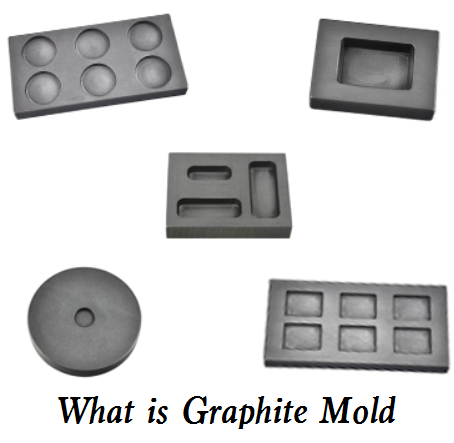The graphite electrode has gradually taken the place of the copper electrode and has emerged as the most widely used electrode for EDM. Because of its low consumption, fast discharge speed, lightweight, and low coefficient of thermal expansion, it is a popular choice for many applications. Mold cavity machining is still primarily accomplished through electro-discharge machining (EDM). What is graphite mold and how it is applied? Let’s take a look at the properties and applications of graphite mold.

Benefits of Graphite Mold
The graphite mold refers to a mold that is made of graphite. Because of its excellent physical and chemical properties, graphite has slowly but steadily gained popularity as a mold-making material.
1. Excellent thermal conductivity and conductivity
2. A low linear expansion coefficient, excellent thermal stability, and heat shock resistance are all characteristics of this material.
3. It is resistant to chemical corrosion and does not react readily with the majority of metals, which is a plus.
The strength of the material increases with the increase in temperature at high temperatures (above 800 degrees Celsius in most copper matrix sintering temperatures).
5. It possesses excellent lubrication and wear resistance.
6. It is simple to work with and has good machining performance characteristics. Molds with complex shapes and high precision can be created using this material.
Applications of Graphite Mold
Continuous casting and semi-continuous casting
The promotion of advanced manufacturing methods such as direct continuous (or semi-continuous) manufacturing of bars or pipes from molten metal has increased in recent years, both domestically and internationally. This method has been adopted in China for the production of copper, copper alloys, aluminum, and aluminum alloys. Continuous casting or semi-continuous casting molds for non-ferrous metals are made of artificial graphite, which is considered to be the most suitable material. As evidenced by production practice, the graphite mold not only improves the casting speed due to its high thermal conductivity (thermal conductivity is a property that determines the solidification speed of a metal or alloy) and good self-lubricating performance, but also allows for direct processing in the following process due to the ingot’s accurate size, smooth surface, and uniform crystal structure. As a result, not only does the yield increase significantly, but the loss of waste products is reduced, and the product quality is significantly improved.
Pressure casting
It has been proven that artificial graphite can be used successfully in the pressure die casting of non-ferrous metals. Among other things, zinc alloy and copper alloy castings made with pressure casting molds made of artificial graphite materials have been used in automobile parts and other applications.
Centrifugal casting
Centrifugal casting has been successfully accomplished with the use of graphite molds. It has been decided in the United States to use an artificial graphite mold with a wall thickness greater than 25mm for centrifugal casting of the bronze casing. Certain anti-oxidation measures can be implemented in order to reduce the risk of artificial graphite mold catching on fire. In the event that it is discovered that the inner surface of the mold has been burned after casting a certain number of castings, the inner hole of the mold can be increased in size to allow for the casting of a large-size casing.
Glass forming
Because of the chemical stability of the stone graphite material, it is difficult to be infiltrated by the molten glass and will not alter the composition of the glass once it has been molten. The heat-resistant impact performance of graphite is excellent, and the material’s size changes only slightly with temperature. In recent years, it has emerged as an essential mold material in the glass manufacturing industry, and it can be used to create molds for glass tubes, bends, funnels, and other custom-shaped glass bottles, among other applications.
Sintering
It is possible to manufacture the sintering mold and support for transistors by taking advantage of the characteristics of very small thermal deformation of artificial graphite material. It has a long history of use. It has evolved into a critical component in the advancement of the semiconductor industry. As well as molds for cast iron, graphite molds are also used in the production of wear-resistant molds for a wide range of non-ferrous metals, as well as molds for heat-resistant metals (such as titanium and zirconium). Thermit welding molds are also used in the production of rail welds.

